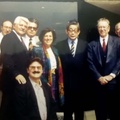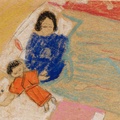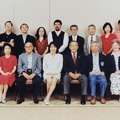For Mexico, late 1910 was a time of great contrasts. On the one hand, the celebration of its first centenary in September of that year appeared to show a united and modern country, full of joy and patriotism. This was the image that President Porfirio Díaz, who had governed the country with a firm hand for more than 30 years, wanted the world to see. The “cry of independence,” the grandiose parade, huge monuments such as the Hemicycle dedicated to Juárez and the Angel of Independence, all seemed to indicate that the aging dictator’s version was real.
On the other hand, on November 20, the splendor of the fireworks with which the people of Mexico celebrated their independence was transformed into blasts from the weapons and cannons that sounded continuously throughout almost 10 years of civil strife. The Revolution had begun! Underneath this modern Mexico, paraded before foreign visitors at parties and banquets hosted by Don Porfirio throughout the month of September, was a country teeming with injustice and contrasts. This situation was revealed by U.S. journalist John Kenneth Turner in a series of reports on Mexico in 1908 and which were later compiled in his famous book, Barbarous Mexico.
In his stories, Turner described how thousands of peasants lived in slave-like conditions on the plantations of Valle Nacional, in Oaxaca, where they worked in the tobacco fields. According to Turner, conditions were just as poor on the sugar plantations, coal mines, and throughout Mexico. Close to Valle Nacional was a sugar plantation known as La Oaxaqueña, owned by U.S. businessmen. Hundreds of Japanese laborers had been brought there, lured by Japanese companies such as Kumamoto Imin Gaisha, which sent tens of thousands of workers to America.
Working conditions at La Oaxaqueña were similar to those found in Valle Nacional. Although the Japanese workers had contracts that set their working hours and wages, their bosses continuously violated those agreements. The immigrants, who began arriving to the plantation in 1906, not only had to endure low pay and long hours of work, but even more difficult to endure were the temperatures above 40 degree Celsius (104 degrees Fahrenheit) and unsanitary living conditions. Mosquitos bearing malaria were the cause of the first deaths among the Japanese workers. The fever and vomiting caused by the illness took the lives of many people, who were buried in an improvised cemetery on the plantation as the number of dead steadily rose.
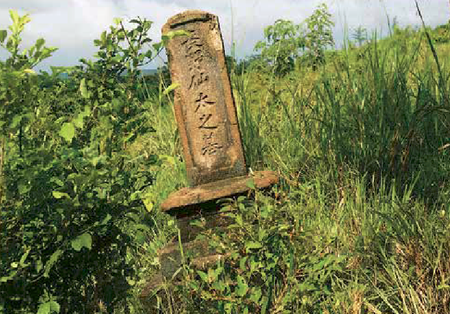
Collection of Shozo Ogino.
Faced with such terrible working conditions, many immigrants fled, including Zenzo (José) Tanaka and a group of workers who left the plantation on the first train bound for northern Mexico, where they settled. After many years of work and saving they were able to open shops and markets.1
In the mines of northern Mexico, the sanitary conditions were similar or worse than on the plantations. At Las Esperanzas coal mine in Coahuila, the miners worked under the threat of explosions and tunnel collapses, and many Japanese miners died there. In Sonora state, in the famous Cananea mine, the workers staged one of the largest strikes in 1906 to demand better wages and working conditions. Their protests were silenced by violence, but revealed widespread discontent with large foreign firms and the dictatorial government of General Díaz, which protected them. There was also a large group of Japanese workers in the mine, among them brothers Tanjiro and Keizo Kano.
But in addition to the difficulties faced by immigrant workers, when the Revolution began they were drawn into a series of battles starting with the first riot in November 1910 in the city of Puebla. Although President Díaz was forced out the following year, the fighting continued and civil war reached almost all corners of the country. The impacts on Japanese immigrants were so great that the Japanese legation formally complained to the Mexican government, which promised to defend their lives and property, but this was a promise it could not fulfill. In northern Mexico, the war was so bloody that the Japanese government was forced to send a diplomat, Shotoku Baba, to speak directly with General Francisco Villa and request that he protect the Japanese who lived in Chihuahua. Because of the danger the Revolution posed to the safety of Japanese immigrants, Baba was able to persuade the United States to allow hundreds of immigrants to settle in Calexico, California, where they filled a great need for labor in the cotton fields.
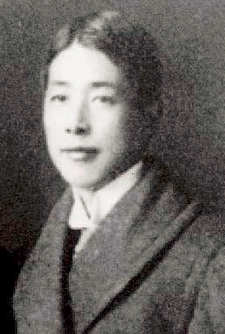
Some immigrants became so involved that they were later recognized as veterans of the Mexican Revolution after the war had ended. Among others, Emilio Nakahara was awarded the rank of second sergeant, while Antonio Yamane became a first captain of Carranza’s Constitutionalist Army.
The story of Kingo Nonaka, who participated in Villa’s army, is well documented by his son, Genaro Nonaka.2 Thanks to the photographs and stories left by Kingo, we know that he came to Mexico from Fukuoka Prefecture in 1906, accompanied by an uncle. At the time, Kingo was just 16 years old and both men began working at La Oaxaqueña plantation. Kingo’s uncle died from malaria just months after arriving, due to the terrible living conditions there. Nonaka and a group of immigrants then fled to northern Mexico, hoping to eventually reach the United States. Unable to enter the U.S., Nonaka remained in Ciudad Juárez (Chihuahua state), where for several years he operated a small feed and seed store. But economic conditions and the banditry that resulted from the Revolution made it impossible for his business to prosper. Nonaka sought work at the Civil Hospital in the same city, where he became a nursing assistant. Because of the intensity of the work resulting from the war, Kingo was trained very quickly in operating and medical techniques far beyond what was typical for a nurse.
In March 1911, when Nonaka visited another Japanese immigrant living near the town of Casas Grandes, a skirmish broke out between the federal army and the forces of Francisco I. Madero. In that battle, Madero was wounded by shrapnel from a grenade and Kingo nursed his wound. He was then recruited into Madero’s army and participated in the capture of Ciudad Juárez in May of that year. That battle, in which the federal forces were defeated, forced Porfirio Díaz out of power and Madero became the president of Mexico. Afterwards, Nonaka became nursing chief in the same hospital in Ciudad Juárez, where he was put in charge of attending to the hundreds of wounded soldiers who arrived as the battles grew.


Japanese immigrant laborers were part of that important and momentous period in Mexico, but their stories are only just beginning to be told.
Notes:
1. A story based on the life of this immigrant and his son, Dr. René Tanaka, is told in Cecilia Reyes’ novel, La gallina azul (The blue chicken), Editorial Ítaca, 2014.
2. See his interesting story in “Kingo Nonaka, Andanzas Revolucionarias” (Kingo Nonaka, Revolutionary Adventures), Editorial Artificios, 1914.
© 2016 Sergio Hernández Galindo


